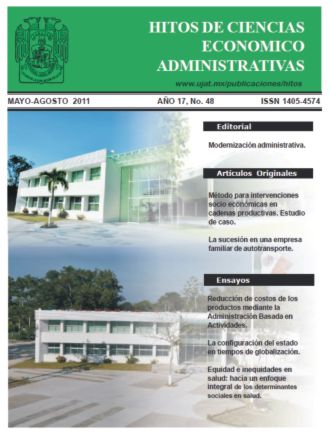MÉTODO PARA INTERVENCIONES SOCIO ECONÓMICAS EN CADENAS PRODUCTIVAS. ESTUDIO DE CASO
DOI:
https://doi.org/10.19136/hitos.a0n48.467Keywords:
Cadenas de valor. Indicadores socioeconómicos. Índices. Análisis interdisciplinar.Abstract
RESUMEN Objetivo: Presentar un procedimiento de análisis confiable para evaluar la magnitud social de los problemas propios de una cadena productiva, y formular un indicador que permita ponderar con el menor sesgo posible las ideas de solución integradora para tales problemas. Material y método: Se emplearon mapas conceptuales y ontologías para integración multi-disciplinar de conceptos y definición del modelo teórico del campo de estudio. Se elaboraron grillas de comparación para equilibrar criterios y fuentes de datos, las que incluyeron informes oficiales, entrevistas e interpolaciones a partir de datos históricos y geográficos. Resultados: Diversas variables han sido partícipes durante el análisis, influyendo directamente sobre los valores cuantitativos resultantes. Conclusiones: Se utilizó la propia complejidad del problema como ventaja para disminuir los sesgos; asimismo se construyó un proceso matemático para equilibrar inconvenientes de elevada interdependencia con grandes diferencias de magnitud y gravedad. ABSTRACT Objective: The aim of this paper is to present a procedure of trustable analysis to evaluate the social magnitude of the own problems related to a productive chain, and to formulate an indicator that permits to ponder with the least possible slant the ideas of integral solution for such problems. Material and method: Concept maps and ontologies were used for a multidisciplinary integration of concepts and definitions of the theoretical model of the field of study. Comparison grids were elaborated to balance the criteria and data sources that included official reports, interviews and interpolations on the basis of historical and geographical data. Results: Diverse variables have participated in the analysis having a direct influence on the resultant quantitative values. Conclusions: The complexity of the problem itself was used as an advantage to diminish the slants. Likewise, a mathematical process was built to balance inconvenient of high interdependency with great differences of magnitude and gravity.Downloads
Downloads
Published
Issue
Section
License
As a requirement for the manuscript, the author is requested to provide the Copyright Assignment Letter, so that the Journal has the publication rights and to avoid plagiarism.
PLAGIARISM POLICIES
The Editorial Board of the Journal HITOS DE CIENCIAS ECONÓMICO ADMINISTRAIVAS has the authority to reject in the review process any manuscript that does not have adequate citation in the documents consulted in its scientific research work, which can be considered as plagiarism behaviors. Likewise, the referees carry out the plagiarism review using specialized software, such as iThenticate, among others.
COPYRIGHT POLICIES
Authors who have publications in the journal accept the following terms: • At the time the manuscript is accepted, the author transfers the copyright to the Journal HITOS DE CIENCIAS ECONÓMICO ADMINISTRATIVAS.
- The authors may make additional agreements for non-exclusive distribution of the published version of the article (e.g., including it in an institutional repository or publishing it in a book) provided that the initial publication in this journal is indicated.
- Authors are allowed and recommended to publish their research work on the Internet (eg, institutional or personal files), which would allow more beneficial exchanges to increase the citation of the published work.
This work is licensed under Creative Commons Attribution-NonCommercial-NoDerivatives 4.0 International





